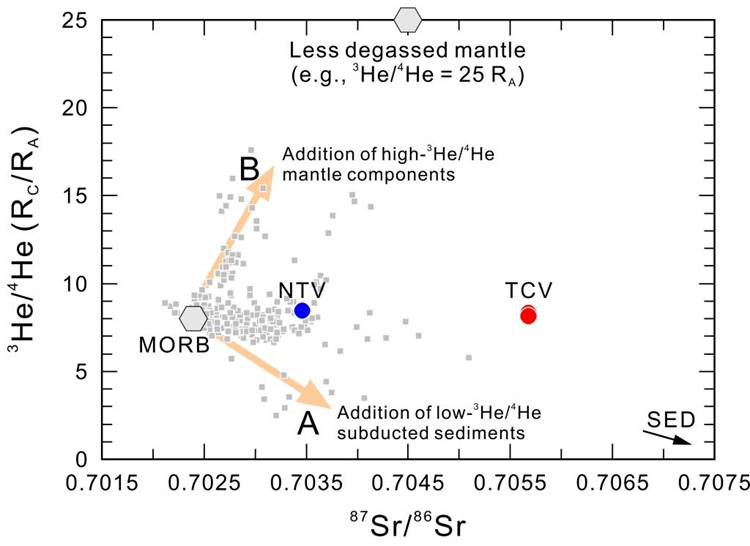Mantle degassing transect across different tectonic units within a plate convergent setting has been well documented for oceanic convergent margins, such as the Japan arc, New Zealand, Mariana arc, and Central American arc, in terms of systematic changes in geochemistry of hydrothermal gases. However, it is still largely unknown how geochemical characteristics of volatiles vary across a continental convergent margin. The release of deeply-sourced volatiles via hot springs and soil micro-seepage has been widely recognized in active fault zones and Quaternary volcanic fields of the Tibetan Plateau and adjacent region. This provides favorable conditions for delineating the volatile recycling processes within the context of India-Asia continental convergence, which would contribute to a better understanding of volatile recycling in the whole-Earth plate tectonic system.
A research group led by Prof. XU Sheng from the School of Earth System Science, investigated a mantle degassing transect in southeastern Tibetan Plateau, providing new constraints for volatile origin and outgassing within the context of India-Asia continental convergence. The results have been published in Geochimica et Cosmochimica Acta.
They found that there are three levels of He degassing as shown by 3He/4He distribution relative to volcanic centers (Fig. 1). A magmatic level He degassing (35‒74% mantle He) is found near active and/or Quaternary volcanoes fed by mantle-derived magmas. With increasing distance to volcanic centers, the outgassed magmatic volatiles are gradually diluted by crustal components, defining a transitional level He degassing (13‒33% mantle He). In contrast, a background level He degassing (<12% mantle He) dominates the entire study area.

Fig. 1 Simplified map showing distribution of air-corrected 3He/4He values in the study area.
They further reported 3He/4He values (8.16−8.48 RA) of olivine phenocrysts for the Quaternary basalts. Combined with olivine 3He/4He data reported in this study and whole-rock 87Sr/86Sr data of host basalts from literature (Fig. 2), source components of the mantle-derived magmas are suggested to include the MORB-type convective mantle, subducted Indian slab materials, and less degassed mantle materials, which can account for the possible decoupling between He and Sr isotope systematics.

Fig. 2 He-Sr isotopic compositions of Quaternary basalts in the study area.
By the School of Earth System Science






